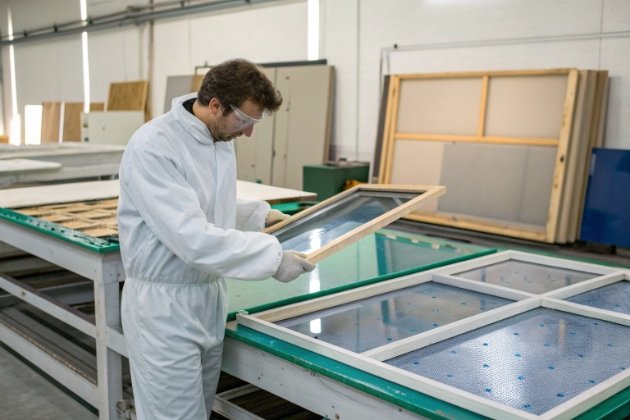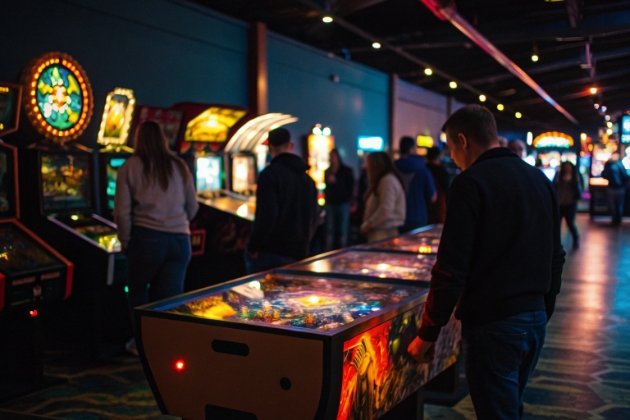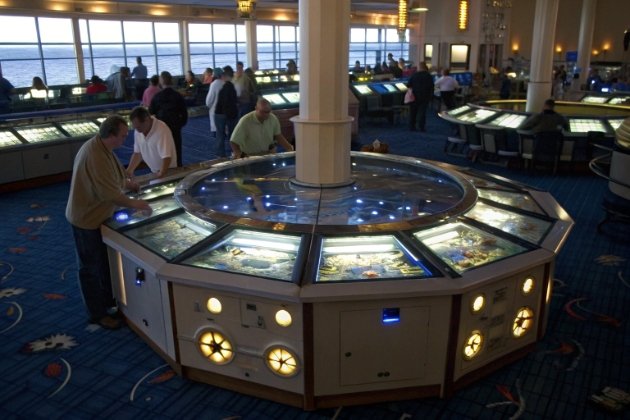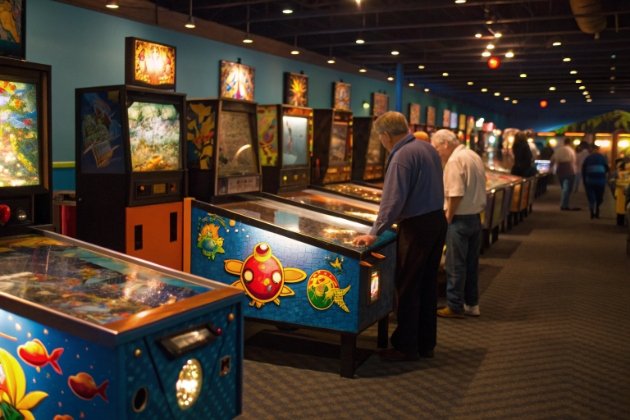When I first began customizing fish game boards for my clients, I realized that one-size-fits-all designs rarely worked. Every venue has its own needs, space, and audience.
You can customize a fish game board to match your venue by adjusting payout ratios, volatility, bet ranges, fish behavior, and design elements. This ensures your game fits your players and profit goals.
Each venue tells a different story. Your game should speak that same language — visually, technically, and emotionally. Let’s explore how to make your fish game board truly yours.
How can I alter the design or size of the fish game board?

When I walk into a gaming room, the first thing I notice is the table layout and player space. A game board that’s too large can crowd the area; one too small feels unimpressive.
You can change the fish game board’s design or size by customizing cabinet dimensions , player capacity, and visual layout to fit your space and improve comfort for players.
Matching Design to Venue Space
Different gaming rooms need different cabinet sizes. A tight corner bar might only fit a 4-player setup, while a big entertainment hall might handle 8 or even 10 players. You can request specific dimensions during the design phase.
| Configuration | Player Capacity | Recommended Venue Type |
|---|---|---|
| Compact Table | 2-4 Players | Small rooms, cafes |
| Standard Table | 6 Players | Mid-size game rooms |
| Large Table | 8-10 Players | Arcades, casinos |
Manufacturers use modular cabinet frameworks. That means you can alter length, height, and control panel angles without redesigning the entire chassis. Some even allow folding side panels for easier transport.
Ergonomics and Comfort
Ergonomic design isn’t just luxury — it affects how long people play. Angled button panels, padded hand rests, and adjustable seat heights can reduce player fatigue. In one of my projects, adding leather hand rests increased play duration by 20%.
Custom Branding Integration
You can also align the cabinet design with your brand image. Add your logo, lighting pattern, and cabinet color. Some operators even match their LED themes to the venue’s overall tone — blue for ocean vibes or red for excitement. Each detail connects your visual identity with player experience.
Can I choose the materials for the fish game board?

The first time I customized a cabinet’s material, I thought the difference would only be visual. I was wrong. Material choice affects durability, cost, and even how sound travels across the machine.
Yes, you can select materials for the fish game board — from metal and wood to acrylic and tempered glass — to balance appearance, strength, and budget needs.
Understanding Material Types
| Material Type | Durability | Cost | Common Use |
|---|---|---|---|
| MDF Wood | Medium | Low | Budget tables |
| Steel Alloy | High | High | Heavy-use venues |
| Acrylic Panels | Medium | Medium | Aesthetic appeal |
| Tempered Glass | Very High | High | Premium builds |
Choosing Based on Venue Type
If your venue has heavy traffic, like a large gaming center, metal frames or tempered glass tops make more sense. They can handle frequent play and prevent wear from constant use.
For smaller or mobile venues, MDF or acrylic works fine — they’re lightweight and easier to move. You can even apply vinyl wraps or printed laminates for a more stylish finish without extra cost.
Sound, Lighting, and Texture
Material affects not just look but also how sound and lighting behave. For example:
- Wood absorbs some sound, creating a quieter ambiance.
- Metal reflects sound and light, giving a more vibrant atmosphere.
- Acrylic diffuses LED lighting smoothly.
By mixing these, you can create the right energy for your gaming space. That’s how the physical feel of your cabinet shapes the emotional experience of your players.
How do I ensure the game board’s design fits my specific gaming environment?

I once delivered a board that looked stunning in our workshop but felt mismatched in the client’s neon-heavy arcade. That experience taught me the power of environmental alignment.
To ensure your game board fits your venue, analyze your environment’s layout, lighting, player flow, and noise level, then adjust cabinet design, color, and game settings accordingly.
Step 1: Analyze the Environment
Before production, study your venue:
| Venue Element | Design Adaptation Example |
|---|---|
| Lighting | Use anti-glare screens and soft LED colors |
| Noise level | Loud rooms benefit from stronger sound effects |
| Player flow | Choose slim cabinet designs for tight spaces |
Step 2: Adjust Gameplay Settings
Your board can be calibrated to match local player habits. Settings like bullet value, game duration, and difficulty can shape the rhythm of gameplay.
For example, shorter sessions keep traffic moving in busy arcades, while longer sessions suit lounge-style game rooms.
Step 3: Integrate Venue Branding
Use your venue’s colors, wall themes, and music style to inspire your fish game visuals. Many developers now allow custom backgrounds, fish characters, and music that tie directly into your space’s identity. This consistency enhances immersion and player loyalty.
When design meets context, your machine doesn’t just look good — it feels like it belongs.
Can you adapt the board for different player capacities?

When I helped design a 10-player board for a coastal arcade, I learned that player capacity affects everything — from wiring layout to player psychology.
Yes, fish game boards can be adapted for various player capacities by modifying cabinet dimensions, control layout, and network configurations without changing the core game system.
Different Capacities, Different Dynamics
Each player count creates a distinct social experience:
| Player Count | Experience Type | Common Venue Use |
|---|---|---|
| 2-4 Players | Private or intimate | Bars, cafes |
| 6 Players | Balanced competition | Mid-size arcades |
| 8-10 Players | Social, high-energy | Game halls, casinos |
Larger tables encourage excitement and spectator engagement. Smaller ones create focus and personal interaction.
Technical Adjustments
To scale capacity, engineers reconfigure:
- Control panels to fit more seats.
- Power distribution for stable performance.
- Networking modules to handle simultaneous actions.
These changes ensure all players get equal shooting response and balanced visual access to the screen.
Player Management and Analytics
Modern boards come with back-end systems that let operators track individual performance and revenue. You can see which seat earns most, how long players stay, and how each game session performs.
This data helps fine-tune player capacity decisions. For instance, if six-player setups consistently outperform four-player ones, you’ll know how to expand profitably.
Conclusion
Customizing a fish game board is not just about design — it’s about matching your space, audience, and business goals. The right board feels natural in your venue and works hard for your success.
Footnotes
1. Payout ratio in skill-based games can significantly affect player engagement and profitability. ↩︎
2. Volatility affects game outcomes and player strategies. Learn more about how it impacts gaming. ↩︎
3. Understanding modular cabinet frameworks can help you customize more effectively. ↩︎
4. Key considerations for ergonomic game design to maximize comfort and gameplay duration. ↩︎
5. Why integrating your branding creates a cohesive gaming experience. ↩︎
6. Material choices directly impact durability, cost, and aesthetics. ↩︎
7. Benefits of metal and acrylic materials in high-traffic gaming environments. ↩︎
8. How environmental factors affect game design and user experience. ↩︎
9. Customizable game settings allow for better player engagement and venue adaptation. ↩︎
10. Understanding player dynamics in large-scale gaming setups. ↩︎


